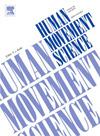The utility of the MABC-2 for measuring motor impairment in children with ADHD: Examining measurement invariance in children with and without symptoms of ADHD
IF 1.9
3区 心理学
Q4 NEUROSCIENCES
引用次数: 0
Abstract
It is important to screen for motor impairments in ADHD due to high comorbidity, yet little is known about the validity of established and standardized motor assessment batteries in children with symptoms of ADHD. Therefore, this study aimed to determine the utility of using the Movement Assessment Battery for Children – 2nd Edition (MABC-2) in children aged 7–9 years with symptoms of ADHD. To achieve this, measurement invariance of the MABC-2 was examined between children with and without symptoms of ADHD. A total of 479 children (n = 277 boys, n = 387 white, n = 66 with ADHD), participated in this study. Children were classified as having ADHD through parental report on the Conner's Parent Rating Scales. Measurement invariance was assesses using a multi-group CFA. A three correlated factor model (Manual Dexterity, Throwing and Catching, Balance) fit the data extremely well (RMSEA = 0.030, SRMR = 0.030, CFI = 0.987, TLI = 0.981) and configural, metric, scalar, and partial strict invariance was demonstrated between children with and without ADHD. These results provide evidence to support the use of the MABC-2 to assess motor impairments in children with symptoms ADHD.
MABC-2用于测量ADHD儿童运动障碍的效用:检查有和无ADHD症状儿童的测量不变性
由于ADHD的高合并症,对其进行运动障碍筛查是很重要的,但对于ADHD症状儿童中已建立和标准化的运动评估电池的有效性知之甚少。因此,本研究旨在确定在7-9岁有ADHD症状的儿童中使用儿童运动评估系列-第二版(MABC-2)的效用。为了实现这一点,在有和没有ADHD症状的儿童之间检查了MABC-2的测量不变性。共479例儿童(男孩277例,白人387例,ADHD 66例)参与本研究。通过康纳父母评定量表的父母报告,儿童被分类为多动症。使用多组CFA评估测量不变性。三相关因子模型(手工灵巧度、投掷接球能力、平衡性)与数据拟合非常好(RMSEA = 0.030, SRMR = 0.030, CFI = 0.987, TLI = 0.981), ADHD儿童与非ADHD儿童的构形、度量、标量和部分严格不变量均存在差异。这些结果为支持使用MABC-2来评估ADHD症状儿童的运动障碍提供了证据。
本文章由计算机程序翻译,如有差异,请以英文原文为准。
求助全文
约1分钟内获得全文
求助全文
来源期刊

Human Movement Science
医学-神经科学
CiteScore
3.80
自引率
4.80%
发文量
89
审稿时长
42 days
期刊介绍:
Human Movement Science provides a medium for publishing disciplinary and multidisciplinary studies on human movement. It brings together psychological, biomechanical and neurophysiological research on the control, organization and learning of human movement, including the perceptual support of movement. The overarching goal of the journal is to publish articles that help advance theoretical understanding of the control and organization of human movement, as well as changes therein as a function of development, learning and rehabilitation. The nature of the research reported may vary from fundamental theoretical or empirical studies to more applied studies in the fields of, for example, sport, dance and rehabilitation with the proviso that all studies have a distinct theoretical bearing. Also, reviews and meta-studies advancing the understanding of human movement are welcome.
These aims and scope imply that purely descriptive studies are not acceptable, while methodological articles are only acceptable if the methodology in question opens up new vistas in understanding the control and organization of human movement. The same holds for articles on exercise physiology, which in general are not supported, unless they speak to the control and organization of human movement. In general, it is required that the theoretical message of articles published in Human Movement Science is, to a certain extent, innovative and not dismissible as just "more of the same."
 求助内容:
求助内容: 应助结果提醒方式:
应助结果提醒方式:


